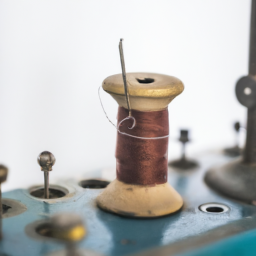
History of the Sewing Tomato

The sewing tomato, also known as a pincushion or a tomato pincushion, is a small, decorative cushion that is used by seamstresses, tailors, and crafters to store and organize sewing pins and needles.
While the exact origin of the sewing tomato is uncertain, it is believed to have originated in the late 19th century. At that time, steel pins were commonly used in sewing, and a need arose for a practical and safe way to store these pins.
The sewing tomato gets its name from its resemblance to a small tomato. Early versions were often made with fabric cut in the shape of a tomato and filled with sawdust or sand to provide stability. The top of the pincushion was typically adorned with a small loop or a green felt leaf to further enhance its tomato-like appearance.
The sewing tomato quickly gained popularity due to its usefulness and affordability. It became a staple tool for sewers and was commonly found in sewing baskets and on sewing tables. Its size and shape made it easy to handle and provided a convenient way to keep pins and needles within reach during sewing projects.
Over time, the design and materials used in sewing tomatoes evolved. Today, pincushions come in a variety of shapes, sizes, and materials. Some are even made to resemble other fruits, vegetables, or animals, catering to the personal tastes and preferences of sewers.
The sewing tomato has not only remained a practical tool but has also become a beloved symbol among sewing enthusiasts. It is often associated with nostalgia, tradition, and the joys of crafting. Many crafters collect vintage sewing tomatoes as a way to connect with the sewing heritage of the past.
Interesting Facts about Sewing Tomatoes:
- The term “tomato” is not strictly limited to pincushions shaped like tomatoes. It is often used as a generic term for all types of pincushions.
- Sewing tomatoes are sometimes filled with emery powder, a mineral abrasive that helps to keep the pins sharp.
- Some sewing tomatoes have a small strawberry attached to the top. This strawberry is filled with sand or wax and is used to store small sewing notions like needles or thread.
- Collecting vintage sewing tomatoes is a popular hobby among sewing enthusiasts. They are often valued for their historical significance and unique designs.
Image source: Freepik




